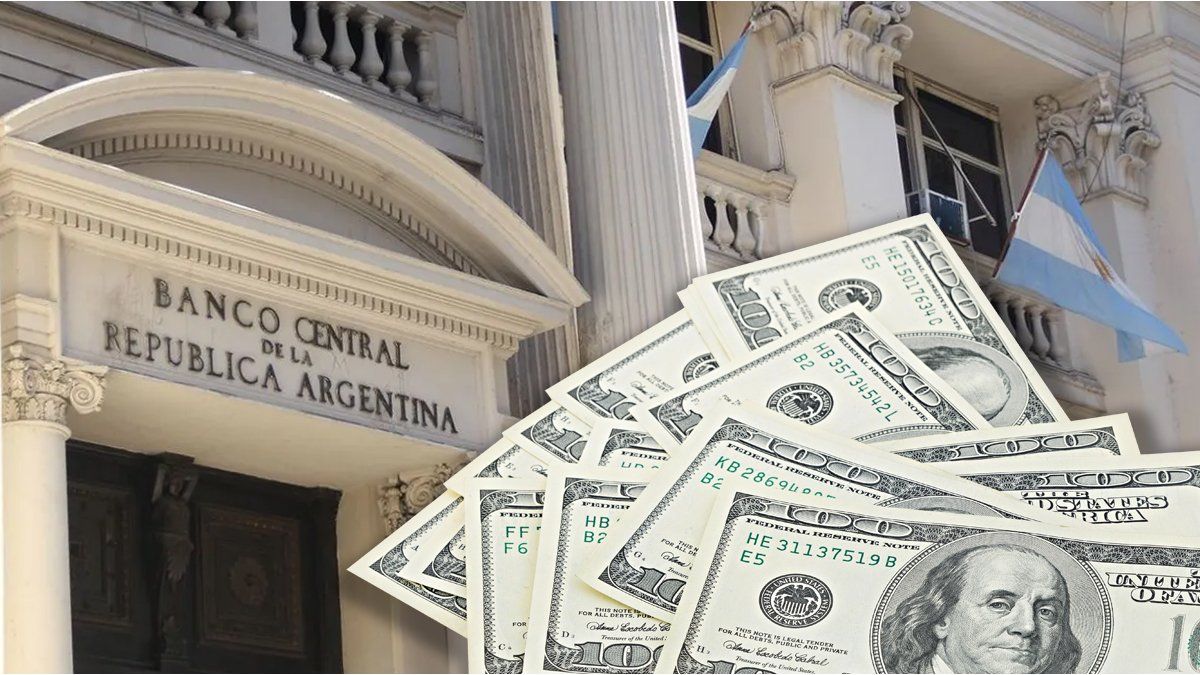The application of tariffs complicates the expectations for the US economy where investors already begin to prick the recession. This factor began to impact the value of commodities: the price of soybeans went from US $ 378 last Wednesday Au $ S361 per ton this Monday. At the same time, oil fell to a minimum of four years located at $ S64, a level that already begins to worry the sector. On this point, PPI analysts estimate that the impact on both soybeans and the Brent translates into a loss of US $ 1,960 million on the external front.
Increase exchange coverage and BCRA has a hard time accumulating reservations
After the confirmation of the new agreement with the International Monetary Fund (IMF) the expectations on modifications in the current exchange scheme and a devaluation, they increased. Even with few definitions in relation to when and in what magnitude the disbursements will be – and therefore, the maturity scheme – the dollar demand continues, although more moderately than the previous weeks.
The crux of the matter, at least in what is observed in the dollar futures, goes through a exchangeable leap that would be concentrated in the months of April and May. Meanwhile, the gap with both the CCL and the MEP and even with the informal dollar remains above 20%. The high uncertainty regarding IMF disbursements, which could be key to sustaining the current strategy, increases the perception of risk and forces investors to become more conservative.
In the exchange front, it is also relevant Highlight the action of the Central Bank in a challenging global context. With reservations that are below US $25,000 million, the “fire power” It looks limited. The devaluation of the Chinese Yuan against the dollar recorded this Monday (-0.4%) and the decrease in gold (-1.5%) negatively impacted the gross reserves, which were reduced by about US $ 328 million (-1.3%), reaching the US $ 24,791 million, the lowest level since January 23, 2024.
“Perfect storm,” synthesized the economist Roberto Geretto, from Adcap, When describing the new panorama. “The trade war that Trump promotes Argentina twice: on the commercial side, with the fall in the price of commodities, and on the financial side, with a greater ‘Flight to Quality’ that strengthens the dollar and presses the emerging currencies.” In this context, he warned, “The equilibrium exchange rate is higher than before, and everything occurs in the middle of a complex negotiation with the IMF.”
BCRA DOLAR RESERVES.JPG
With reserves that are below the US $25,000 million, the “fire power” of the BCRA is limited.
Francisco Rorto, ACM economist, warned that the tariff rise in the US adds pressure on emerging currencies, and in that context, the “Crawl” of 1% monthly leaves Argentina with little capacity to absorb external shocks. “The global panorama is complicated: uncertainty grows, the prices of commodities fall and the energy balance, one of the pillars of the external front this year is resent,” he explained. According to Ratto, this new scenario could serve as an argument to Review the exchange scheme, something that even the IMF would see with good eyes in a eventual new agreement. However, he warned that any correction of the exchange rate would also imply risks in terms of inflation, a front that the Government seeks to protect especially in an electoral year.
What happens if the global tension is aggravated?
According to the latest LCG report, “when a large country imposes tariffs, the general result is that the rest of the currencies should be depreciated against the dollar to compensate for the modification of relative prices that the tariff imposed.” In that sense, analysts warn that, in a context where it is already difficult to accumulate currenciesthis new scenario introduces additional challenges: not only because of the fall in soy and oil prices, but also because of the complexity of calibrating a consistent exchange strategy.
“In a context that requires flexibility, we are crowded with the premise that there can be no exchange rate movements before the elections. Or maybe this is the perfect excuse to review the strategy,” they said.
For its partAldo Abram, economist from the Freedom and Progress Foundation, He warned that if global turbulence derived from Trump’s policy extends, “they tend to complicate the situation further,” since “a fixed exchange rate in a scenario of high uncertainty is hardly well received.” In addition, he remarked that Argentina already faces a lower capital entry and a growing departure of funds, which aggravates the panorama. Nevertheless, He clarified that if the external crisis does not dissipate soon, the current exchange scheme could face more pressures.
In the meantime, the estimates of private consultants anticipate an average inflation of 2.7% for March, which marks a New increase above 2% and the rhythm of controlled devaluation of 1% monthly marking a new decoupling that the government sought to avoid.
Source: Ambito
I am a 24-year-old writer and journalist who has been working in the news industry for the past two years. I write primarily about market news, so if you’re looking for insights into what’s going on in the stock market or economic indicators, you’ve come to the right place. I also dabble in writing articles on lifestyle trends and pop culture news.




